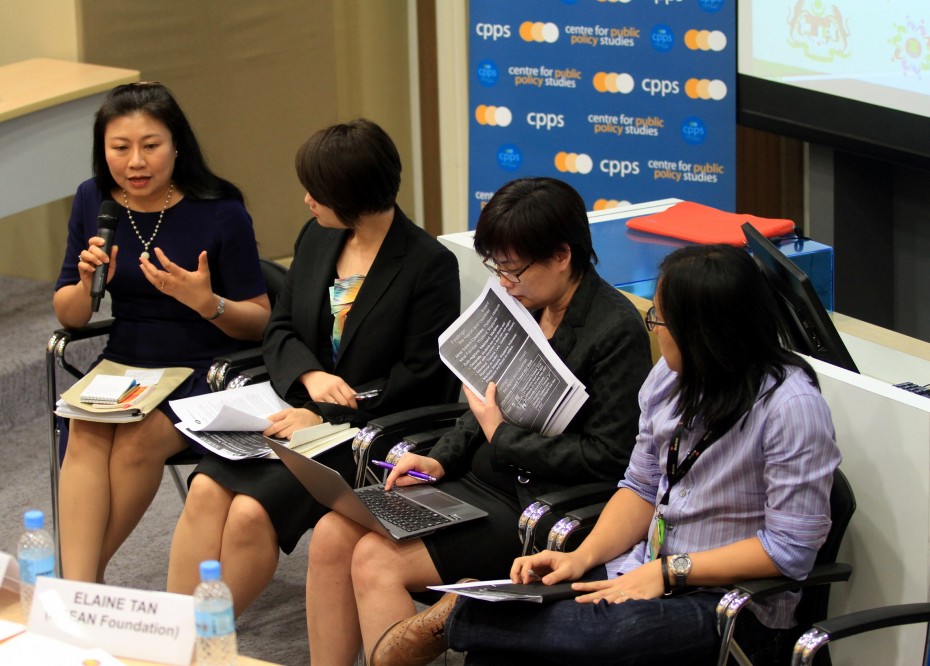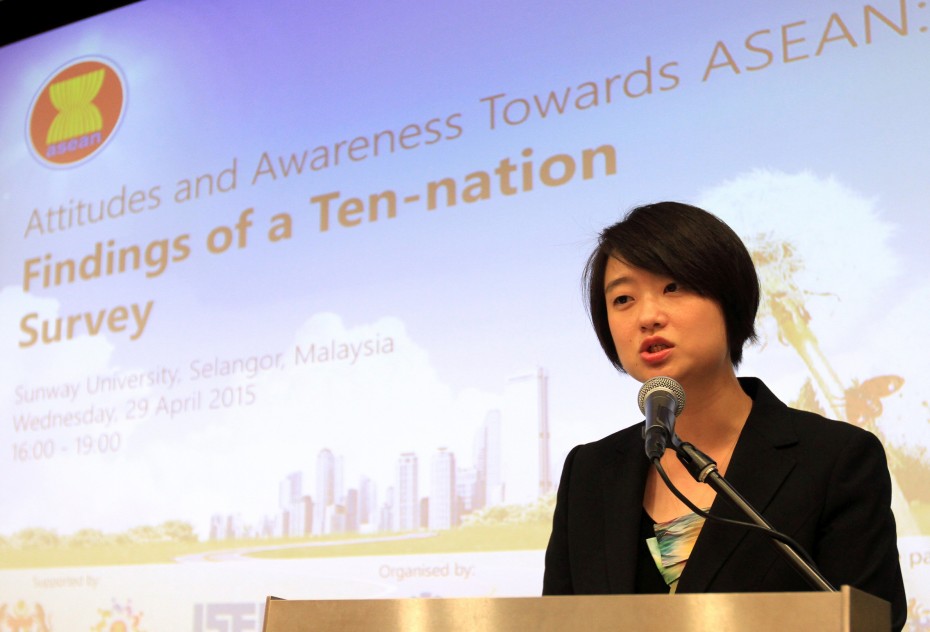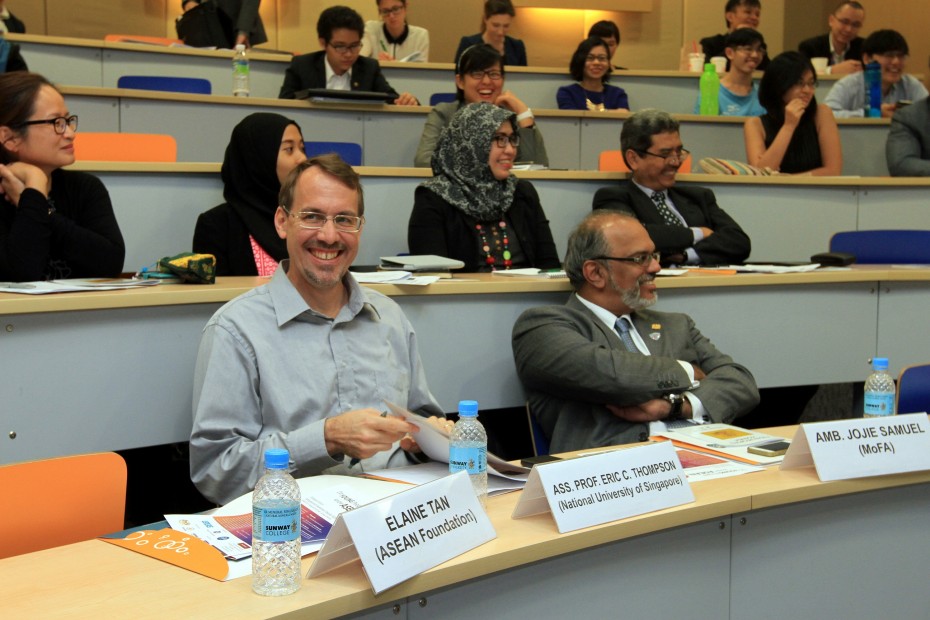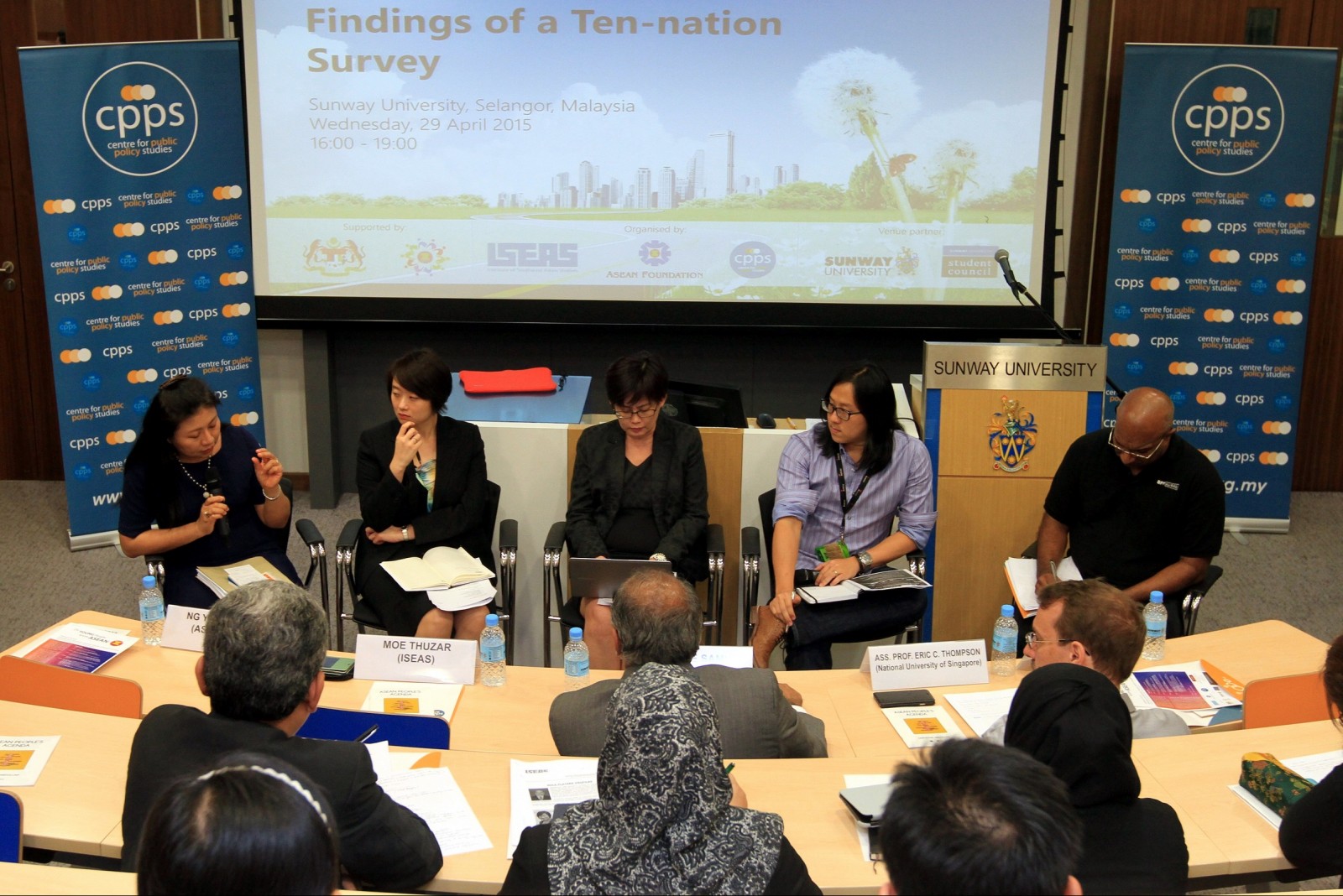FUN fact: 60% of the combined population of Asean countries is under 35.
So it’s no surprise that as the chair of Asean this year, one of Malaysia’s top priorities has been to build a youth-driven future for the region.
It’s a nice thought, but do the young people here even know what Asean is all about?
The answer, perhaps surprisingly, is yes, according to the 2014 Asean Awareness Survey.
Over 4,000 students participated in the survey, from 19 top universities in the region including the National University of Singapore (NUS), Chulalongkorn University, and one of our own – Universiti Malaya.
Most of the respondents could list nine of the 10 countries who are part of Asean, and they managed to identify seven on the map.
Nearly 85% could identify the Asean flag (yes, there is one), and perhaps even more impressive, close to half the respondents knew the founding year of Asean – 1967.
But scoring high on Asean trivia is one thing; actually understanding and identifying with the organisation is another altogether.
R.AGE was invited to a forum to discuss the survey’s findings with a group of academics and part of the team behind the survey – NUS associate professor Eric Thompson and Institute of South-East Asian Studies (ISEAS) researcher Moe Thuzar, who is with ISEAS’ ASEAN Studies Centre.

R.AGE editor Ian Yee was also at the forum at Sunway University, which showed the findings of the Asean Awareness Survey 2014.
Ambassador Jojie Samuel, undersecretary at the Foreign Affairs Ministry and deputy director general of the Asean Socio-Cultural Community Division (ASCCD), summed it up best when he spoke at the forum. “In 2012, we conducted a community building exercise in the main cities of Asean countries, and while 81% of those surveyed had heard about Asean, 76% did not know what Asean does nor its implication to their lives.”
Some at the forum agreed that young people in the region still lack a meaningful understanding of what Asean is about, including Ng Yeen Seen, Chief Operating Officer at the Asian Strategy & Leadership Institute (ASLI) and Senior Director at the Centre for Public Policy Studies (CPPS).
“It’s time for the youth to have a sense of association with what Asean is,” she said. “For many of us, and them, Asean is a government body or an NGO, but it means nothing to the people on the street. It’s time to capitalise and build on our shared Asean identity and values.
“Youth want to have equal and meaningful participation, but what exactly that means is something we need to figure out.”
R.AGE spoke to several young people from across the region to find out what they thought about the survey results, and they all agreed that their peers simply don’t know how Asean affects them.
“Growing up, I was aware of Asean, and that it involved countries within the region,” said city-planner Ina Lorena Flores, 29, from the Philippines, adding she was only vaguely aware that the association was supposed to benefit its member nations.

Awareness of what’s happening in Asean among young people is very low, with most young Asean-ites unbothered by things happening in the region. Photo: SAM THAM/The Star
So, what exactly does Asean do?
The Association of South-East Asian Nations (Asean, obviously) is a political and economic organisation that aims to improve pretty much everything in the region – from economic growth to social and political stability – through better cooperation between the member states.
And youth participation in achieving the goals of Asean is particularly important. Ng said: “They may not necessarily know what they want from Asean, but give the 17-year-olds the exposure and knowledge they need, and when they become 25, the soul-searching may result in ideas for the region.”
Responding to questions about the survey’s sample, Thompson was quick to point out the survey was not meant to be representative of all classes of Asean youth, which was not possible due to the huge social and economic gap among young people throughout South-East Asia.
“This is a survey of middle class youth who have done well (academically). It is not representative of all the people,” said Thompson.
However, we did pick out two vocational/technical schools, one in Thailand and one in Singapore to see if there are differences between the higher-achieving ones and the vocational students. The answer is no. The profile of the answers we got were similar.”
The same survey had been run in 2007 with around 2,000 participants, and Thompson revealed that the responses were very much similar.
The biggest changes were recorded in Myanmar and Thailand. A quarter of those surveyed in Myanmar in 2007 were skeptical towards Asean, whereas in 2014, the response was much more positive and consistent with regional patterns. Thailand, on the other hand, became more ambivalent.

Thompson, an associate professor at the National University of Singapore was one of the researchers involved in the Asean Awareness Survey 2014.
In general, students from less affluent nations (Cambodia, Vietnam and Laos) associated more positively with Asean, while the more affluent ones like Singapore, Brunei and, most recently, Thailand were ambivalent.
Also, in 2007, economic cooperation was the main thing young people wanted to see happening among Asean member states. There was a huge shift in 2014, with greater integration for the tourism industry now the top priority, and economic cooperation dropping to third place below development assistance.
The students were also very concerned with reducing poverty and improving education (particularly through exchange programmes), but placed much less importance on regional identity and the preservation and promotion of culture.
The young people’s perception of other Asean member states were very consistent as well. When asked to rank the best countries for work and travel, Singapore, Thailand and Malaysia occupied the top three – in that order – both in 2007 and 2014.
For there to be meaningful participation from the young people in Asean, Samuel believes there needs to be more opportunities for youth to contribute to Asean community-building efforts.
“Our community-building process is like a marathon without a finish line. We simply must endure and continue to push forward, which is why we require a pool of strong, forward-looking Asean leaders to sustain out gains in the future,” he said.
He also said that with so much of the population under 35, many in this age bracket rely on their peers for information, making young people themselves the main driving force for promoting awareness about Asean.
“We have to harness the strength of youth groups and enable them to become the champions for a politically cohesive, economically-integrated Asean,” he said.







Tell us what you think!